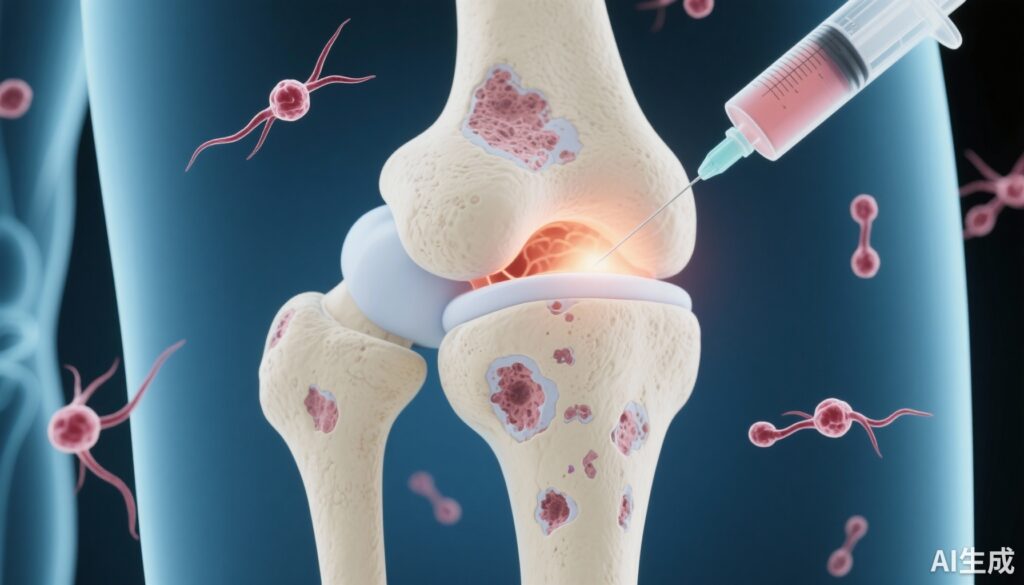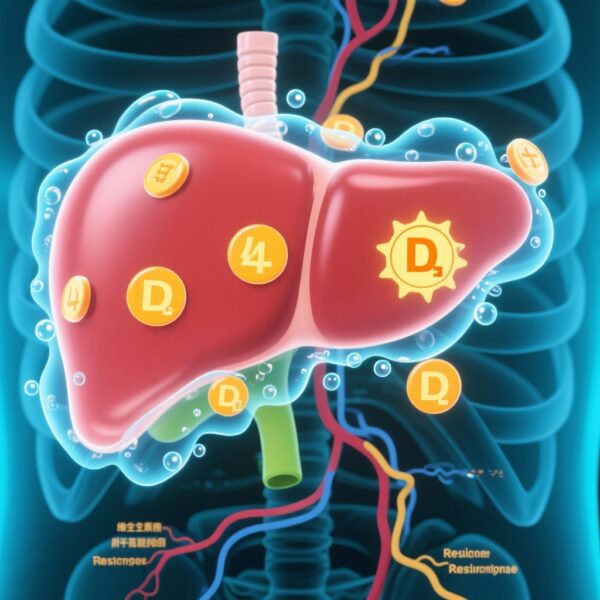Highlight
– Stem cell therapy (SCT) combined with mechanical support or bone grafting shows potential to improve functional outcomes in avascular necrosis of the femoral head (ONFH).
– Pure SCT alone generally fails to demonstrate statistically significant improvements.
– SCT combined with mechanical support may reduce risk of total hip replacement (THR) and improve Harris Hip Score (HHS).
– Evidence certainty is moderate for delaying THR but low for other outcomes due to methodological variability.
Study Background
Osteonecrosis of the femoral head (ONFH) is a progressive orthopedic disorder characterized by compromised blood supply leading to bone tissue death within the femoral head. This condition predominantly affects younger adults, leading to femoral head collapse, joint pain, loss of hip function, and often necessitates total hip replacement (THR) at relatively early ages. Given the disabling nature of ONFH and its impact on quality of life and healthcare resources, there remains an unmet clinical need for therapies that can preserve the native joint and delay or avert THR.
Stem cell therapy (SCT), based on regenerative principles, has emerged over the last decade as a promising intervention aimed at restoring vascularization and promoting bone repair in early-stage ONFH. However, the clinical effectiveness of SCT, either alone or combined with mechanical support strategies such as core decompression or bone grafting, remains incompletely established in high-quality randomized data. This systematic review and meta-analysis by Bharti et al. critically appraises randomized controlled trials (RCTs) to quantify SCT efficacy in ONFH management.
Study Design
The authors performed a thorough systematic search through November 2024 to identify RCTs comparing SCT—administered alone or in combination with mechanical intervention or bone grafting—versus standard care or other controls in ONFH patients. Ten RCTs comprising 545 affected hips underwent meta-analysis. The mean follow-up duration across studies approximated 36 months, providing mid-term outcome insights.
Primary endpoints were:
- Incidence of total hip replacement (THR)
- Disease progression assessed radiographically or clinically
Secondary outcomes included validated measures of hip function and pain:
- Harris Hip Score (HHS)
- Visual Analog Scale (VAS) for pain
- Western Ontario and McMaster Universities Osteoarthritis Index (WOMAC)
Effect sizes were pooled using random-effects models to account for clinical heterogeneity, and evidence certainty was evaluated with the GRADE methodology.
Key Findings
The meta-analysis revealed nuanced findings depending on SCT modality:
SCT Combined with Mechanical Support or Bone Grafting
When SCT was paired with mechanical interventions such as core decompression or bone grafts, patients experienced a trend toward reduced risk of requiring THR (relative risk [RR]: 0.74; 95% confidence interval [CI]: 0.46 to 1.20). Although this reduction did not reach statistical significance, it suggests a clinically meaningful delay in disease progression that could translate into joint preservation.
Importantly, functional outcomes improved significantly in this combined therapy group, notably in WOMAC scores (mean difference [MD]: -10.7; 95% CI: -17.2 to -4.3), indicating decreased pain and enhanced joint function. Subgroup analyses underscored that mechanical support substantially augmented SCT’s benefits, with marked improvements in HHS scores and THR prevention compared to SCT alone.
Pure SCT Alone
By contrast, SCT administered without adjunct mechanical support failed to demonstrate statistically significant benefits across primary or secondary outcomes. This underlines the limited efficacy of isolated SCT in altering disease course or improving function in ONFH.
Quality and Certainty of Evidence
The risk of bias was deemed low in six studies, with four exhibiting higher risk due to methodological shortcomings such as inadequate blinding or incomplete outcome data. The GRADE certainty of evidence was rated moderate for THR prevention but low for functional scores and pain outcomes, reflecting some inconsistency and imprecision across studies.
Expert Commentary
These findings resonate with evolving orthopedic consensus that stem cell–based regeneration in ONFH may require biomechanical offloading or structural support to achieve meaningful clinical improvements. Mechanistically, SCT alone may not suffice as the necrotic bone area often lacks a supportive scaffold, compromising stem cell engraftment and bone remodeling.
Core decompression, by reducing intraosseous pressure, promoting neovascularization, and coupling with SCT, appears to create a more conducive microenvironment for bone repair. Similarly, bone grafting provides mechanical stability while supplying osteoconductive matrix, enhancing the regenerative potential of stem cells. However, the heterogeneity in stem cell sources, dosing, delivery methods, and disease stages across trials limits broad generalization.
Notably, long-term durability of combined SCT approaches and cost-effectiveness analyses remain insufficiently studied. Current evidence supports cautious optimism but mandates further rigorous, adequately powered trials with standardized protocols.
Conclusion
Bharti et al.’s meta-analysis delivers a critical appraisal of stem cell therapy in ONFH, clarifying that SCT alone is unlikely to alter disease trajectory or improve hip function substantially. However, SCT combined with mechanical support or bone grafting represents a more promising strategy, showing potential to delay total hip replacement and improve patient-centered outcomes over a follow-up of three years.
Clinicians should consider integrated regenerative and structural approaches for ONFH, particularly in early stages, while researchers must prioritize standardization and long-term follow-up in forthcoming RCTs to define SCT’s precise role. Until then, stem cell therapy remains an adjunct rather than a stand-alone treatment in this challenging orthopedic condition.
Funding and Clinical Trials Registration
The primary analysis by Bharti et al. did not report external funding sources. Clinical trial identifiers for included studies were not specified in the summary but can be referenced within the individual RCT publications.
References
Bharti SK, V S MS, Venkateswarlu M, Niveditha M, Sharma S, Bansal D. Efficacy of stem cell therapy for avascular necrosis of the femoral head: A systematic review and Meta-analysis. Bone. 2025 Nov;200:117590. doi: 10.1016/j.bone.2025.117590. Epub 2025 Jul 10. PMID: 40651741.
Mont MA, et al. Nonoperative management of osteonecrosis of the femoral head. Orthop Clin North Am. 1995; 26(3): 411-32.
Sen RK. Current perspectives on osteonecrosis of femoral head. Indian J Orthop. 2011;45(1):15-21.
Gangji V, et al. Stem cell therapy for early stage osteonecrosis of the femoral head: a randomized clinical trial. Bone. 2011;49(5):1027-33.



